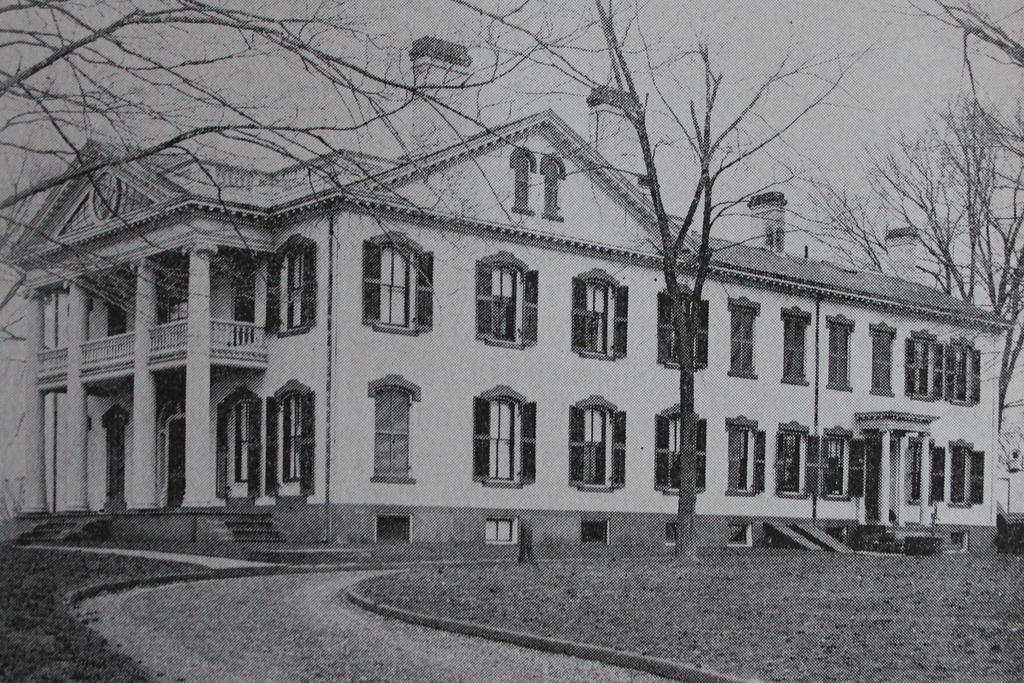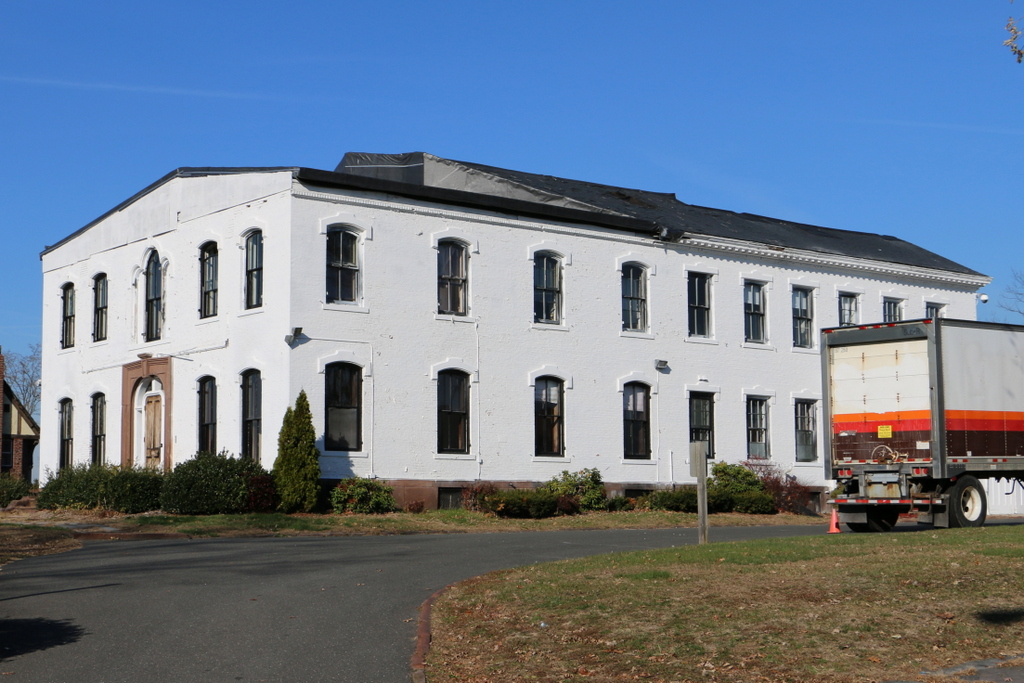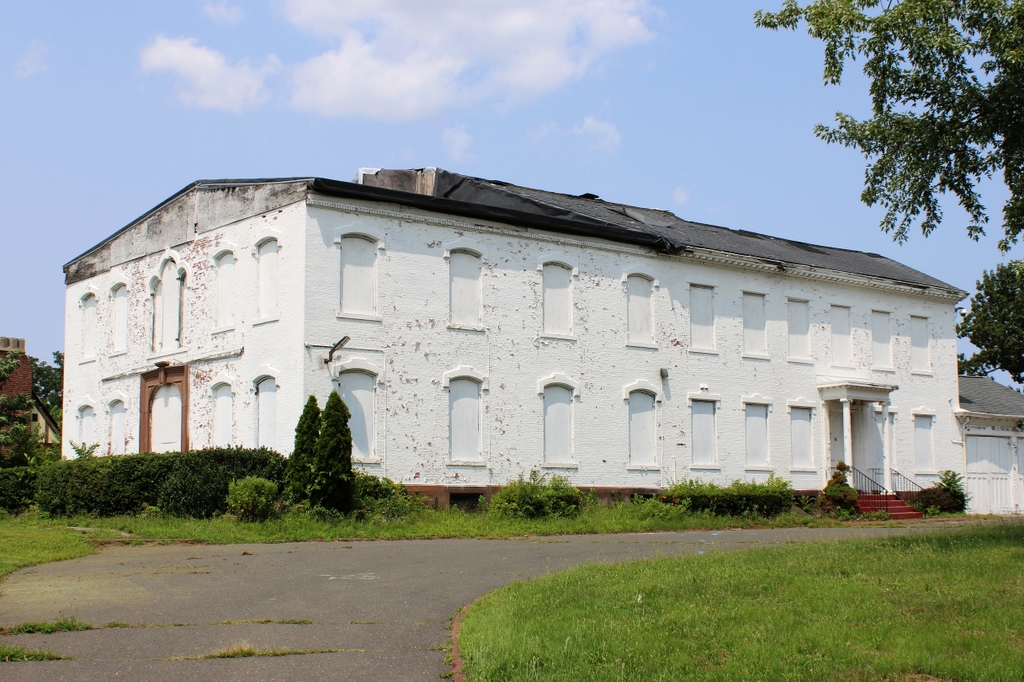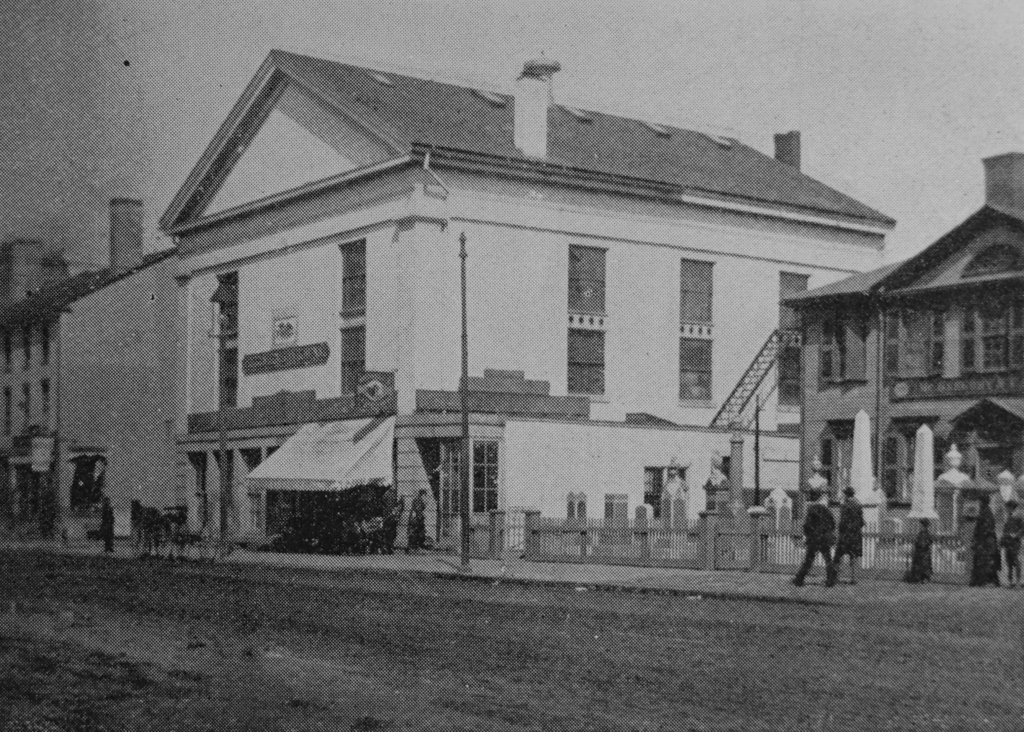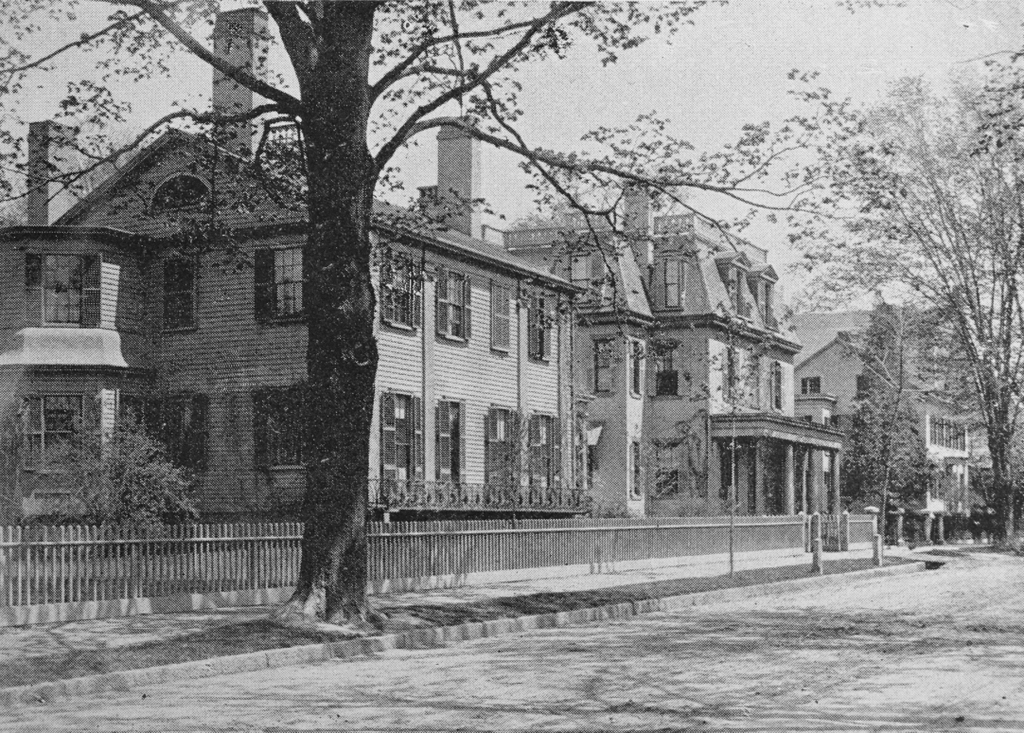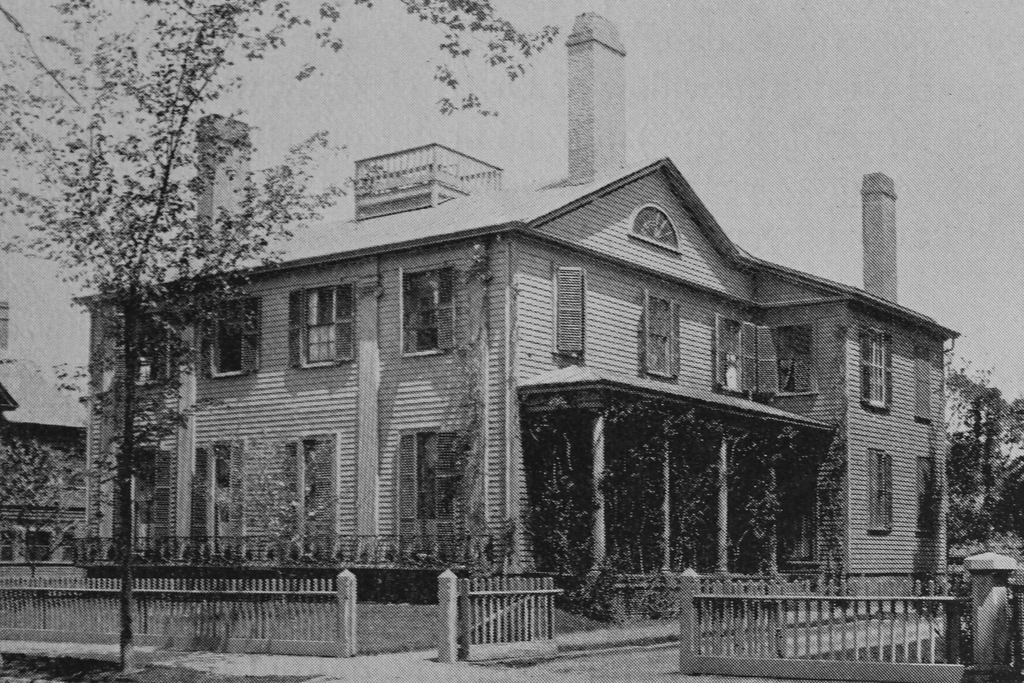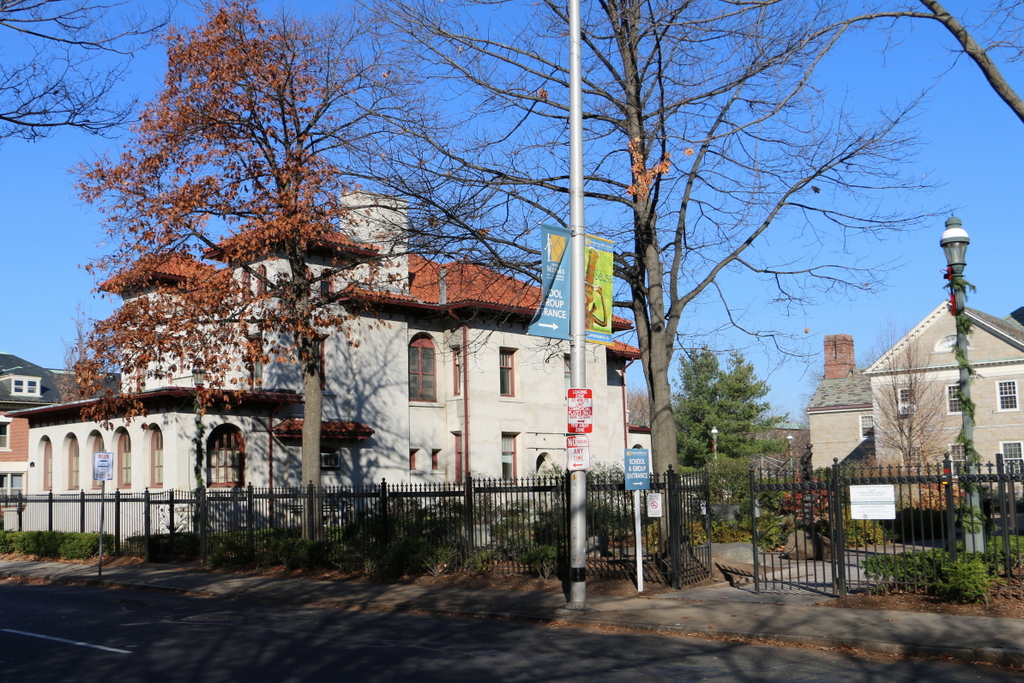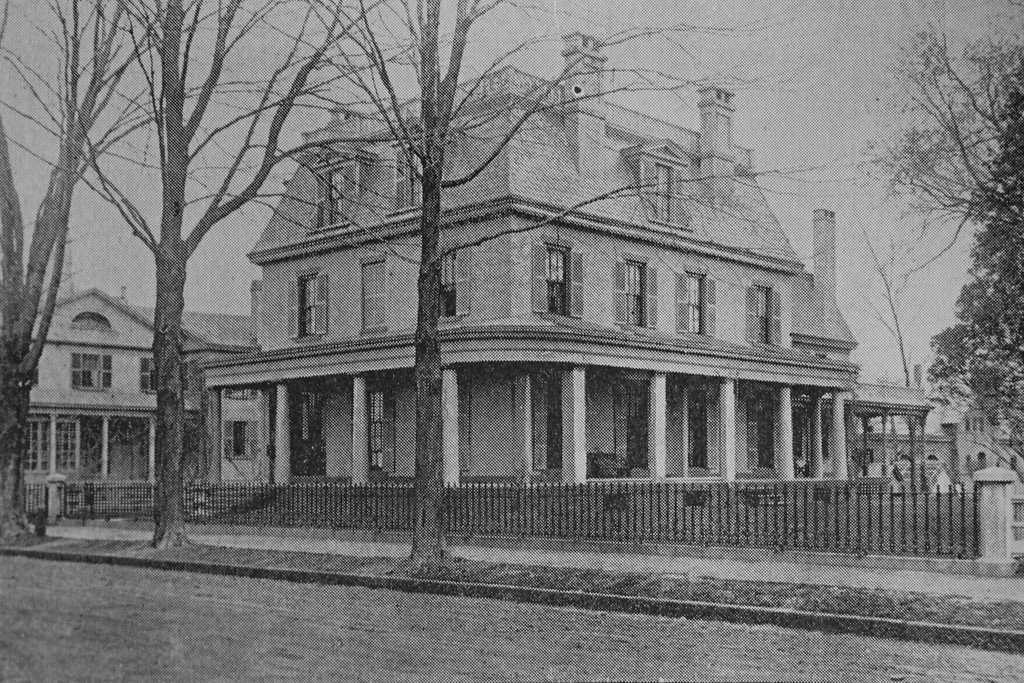The old San Francisco Mint, located at the corner of Mission and Fifth Streets, in the aftermath of the April 18, 1906 earthquake. Image courtesy of the Library of Congress, Detroit Publishing Company Collection.
The building in 2015:
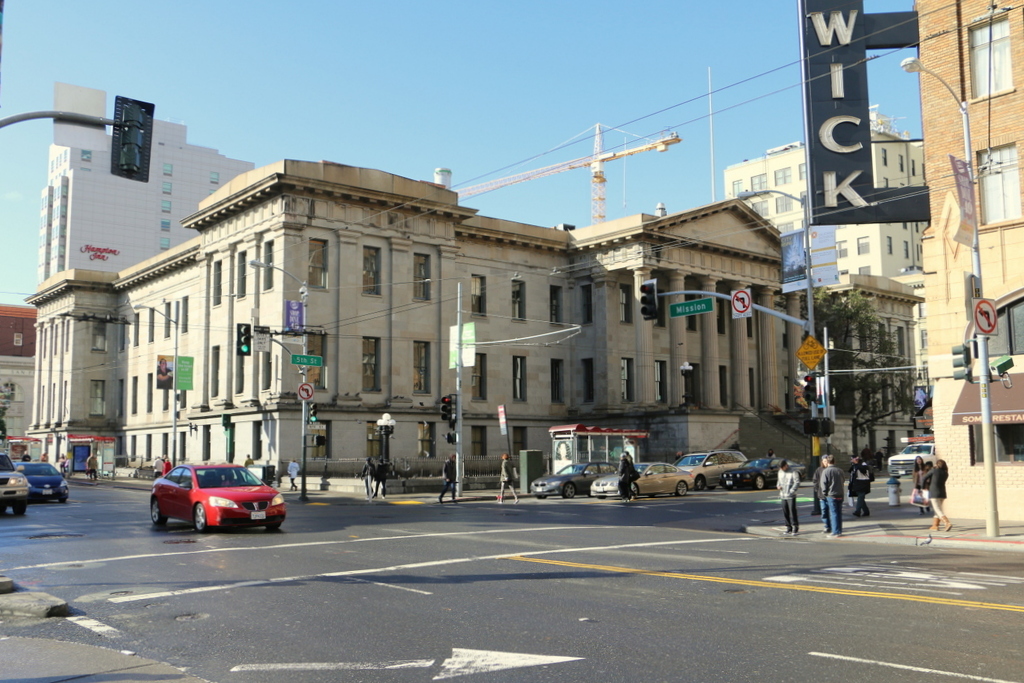
Amid the rubble and burned-out buildings left behind in the aftermath of the 1906 earthquake, the San Francisco Mint was one of the few buildings in the affected area that survived both the earthquake and the subsequent fires, as the first photo shows. The San Francisco branch of the US Mint was established in 1854 to handle the gold that was mined during the California Gold Rush, and this building opened 20 years later, in 1874.
At the time of the earthquake, the building was one of four US Mint facilities, and in addition to making coins it also held around $200 million in gold, which was a significant portion of the nation’s entire gold reserves. Because of this, its survival in the disaster was of vital importance, and as the fires spread across the city, the mint employees used a well on the property to fight the flames and quickly extinguish any fires that ignited on the building.
Part of the reason for the fire’s destruction across the city was the inept response of the city government, who ordered widespread evacuations instead of using every able-bodied person to assist in the firefighting efforts. This allowed entire neighborhoods to burn almost unopposed, but here at the mint it was a different situation. As a federal building, it was immune from the city’s evacuation order, and because of that its employees were able to save the building even as the city burned around them.
This building functioned as the San Francisco Mint until 1937, when the present-day mint opened on Hermann Street. Today, the old building is still standing. It was sold to the City of San Francisco for one dollar in 2003, and it is now periodically open to the public for different events.
This post is part of a series of photos that I took in California this past winter. Click here to see the other posts in the “Lost New England Goes West” series.


